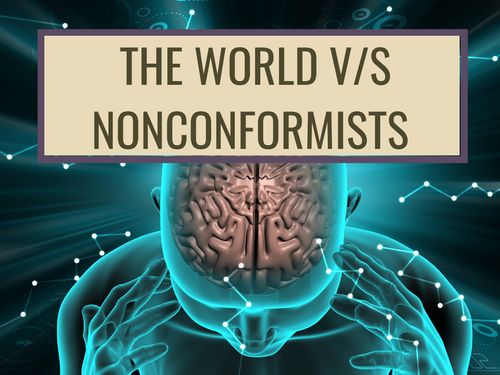The cost of intellectual independence
Jul 18, 2021 · 2 mins read
0
Share

In World War 2, the US and the USSR fought on the same side. After the war, the prevailing consensus in American foreign policy establishment was that the USSR and the US could pursue their (different) geopolitical goals without fearing interference or pushback from the other.
Save
Share
In 1946, diplomat George Kennan wrote a telegram arguing that the USSR was not quietly pursuing its agenda - it was actively overstepping into the American sphere of influence. He thought peaceful coexistence was a pipe-dream, and advocated for immediate containment policies.
Save
Share
Kennan: “The United States cannot expect political intimacy with the Soviet regime. Regard the Soviet Union as a rival, not a partner. Soviet policies will reflect no abstract love of peace and stability but rather a persistent pressure toward the weakening of all rival powers.”
Save
Share
Kennan sparked off an immediate realignment. The telegram stirred President Truman to put in place the Truman Doctrine. Going forward, the US would actively provide ideological and financial muscle to political parties and institutions resisting the expansionist Soviet regime.
Save
Share
And yet, Kennan was on his way out by 1950. He left the Department of State that year. He went from being one of the most influential insiders to a complete outsider - in less than 5 years. How did this happen?
Save
Share
In a celebrated essay (“George Kennan and the Common Mind”, 1969) historian Louis Halle put forward an answer: Kennan disturbed the common mind too much.
Save
Share
The common mind - a cluster of commonly held beliefs - ensures cohesion and collective action. When people share values and belief systems, they can marry, trade with, and trust each other. Societies cannot exist without a common mind.
Save
Share
A dozen people who all speak German will beat a dozen people who each speak a different language. Sharing common beliefs is like sharing a common language. Therefore, societies strike out with fury against non-conformists.
Save
Share
Kennan was such a nonconformist. With the “the courage of his private vision,” says Halle, he provided original insight when it was sorely needed. But he shook the boat too much, and became a “lone individual against the bureaucracy that was Washington.”
Save
Share
Groups - from military platoons to government bureaucracies - are in tension with their nonconformist members. The dissidents inject original insight into their groups’ common mind to keep it connected with reality - but groups can bear only so much free thought for so long.
Save
Share
0